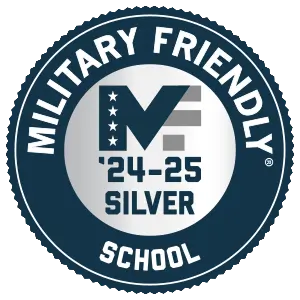How to Become a Certified Medical Assistant in Ohio: Your Step-by-Step Guide
 Launching a career is always complex. There are often more questions than answers. Where can I find training? How long will it take? How do I climb the career ladder? But becoming a certified medical assistant in Ohio is surprisingly straightforward if you understand the process. We’ll help you get started with our step-by-step guide.
Launching a career is always complex. There are often more questions than answers. Where can I find training? How long will it take? How do I climb the career ladder? But becoming a certified medical assistant in Ohio is surprisingly straightforward if you understand the process. We’ll help you get started with our step-by-step guide.
Step #1 — Complete a Vocational College Medical Assisting Program
Prospective medical assisting students can choose from diploma programs. Programs offer comprehensive, career-focused training with an emphasis on the practical skills employers are looking for. You’ll graduate in 12 months, qualified for the same jobs and industry certifications as your peers with degrees.
Programs are widely accessible, and admission is streamlined. Ideal for the adult student, learning is a fusion of classroom discussion, laboratory exercises, and practical experience. Class sizes are small, giving instructors more time with each student. You’ll be treated as an individual in a relaxed and creative atmosphere where you can thrive. It’s education the way it was meant to be.
Step #2 — Pass the Certification Exam
Ohio doesn’t require certification to work as a medical assistant, but it’s the next logical step in the education process for students who want to further their careers.
You won’t take the exam until after you graduate. However, the certification process begins the day you start classes. Every course in a vocational college program covers material on the test. It’s just one of many ways vocational colleges support your certification efforts.
Credentials are available from any of several agencies accredited to evaluate applicants. Some, however, are more broadly recognized than others. The Certified Clinical Medical Assistant (CCMA) certificate is among the most relevant. Questions are chosen based on national employer surveys and reflect the knowledge and skills employers want most from medical assistants. Offered by the National Healthcareer Association, having a diploma guarantees your eligibility.
The exam is fully computerized and consists of 150 questions across seven domains:
- Foundational Knowledge and Basic Science
- Anatomy and Physiology
- Clinical Patient Care
- Patient Care Coordination and Education
- Administrative Assisting
- Communication and Customer Service
- Medical Law and Ethics
More than half of the questions concern clinical patient care, covering infection control, workplace safety, laboratory procedures, phlebotomy, electrocardiography, and more. You’ll have three hours to finish the exams with optional breaks. No hands-on skills demonstrations are required.
Preparation is the key to first-time success. Vocational college programs offer abundant educational resources, from study guides and practice tests to student-led study groups. Online, you’ll find visual learning aids, interactive quizzes, and peer-to-peer support.
Understanding the structure of the exam is also crucial. Familiarity decreases test anxiety. Knowing what to expect, including the types of questions and time limitations, contributes to a more confident and focused mindset. Instructors will share tips on managing your time, taming the jitters, and approaching difficult questions.
Step #3 — Find Your First Job
Vocational colleges provide career services, helping students transition from the classroom to the workforce. Designed to guide and support you as you look for work, they’re a value-added benefit of job-focused training.
Assistance takes many forms. By partnering with local businesses, vocational schools create relationships they can leverage on their students’ behalf. Representatives work with company leaders to address their training needs. Hiring managers then turn to graduates to fill open positions, knowing they’re well-qualified. It’s a win-win situation.
Step #4 — Reach for the Stars
Certification is the first and most important step toward advancing your career. It establishes your professional reputation and qualifies you for increasingly responsible positions. When promotions are available, your name may float to the top of the list because you’ve shown a commitment to improving your individual and team player skills.
And when you’re ready, you can leverage your experience and general certification into specialty certifications in pediatrics, cardiology, and mental health. The more you know, the more you’ll grow in any field. Knowledge is rocket fuel for medical assisting careers.
Step #5 — Maintain Your Certification
Maintaining your certification as a medical assistant requires continuing education. In a field that evolves as quickly as healthcare, it’s critical to keep pace with advancements. This could involve taking classes, attending seminars, or attending conferences sponsored by professional organizations in Ohio. However, you can generally satisfy the requirements by completing the online learning modules offered by certifying agencies.
Regardless of your interests, there’s always something new, exciting, and relevant to learn. Review the material, complete the quizlets, and submit the credits for approval. It’s that easy.
What Do You Learn in a Medical Assistant Program?
Vocational college programs cover the full range of clinical and administrative skills you need to succeed as a medical assistant.
The curriculum covers:
Medical Terminology
Understanding the language of medicine is essential for effective communication in healthcare settings. This course takes a deep dive into word structure, acronyms and abbreviations, units of measure, and specialized terminology related to common disorders, diagnostics, and treatments. Graduates will feel confident reading charts, taking orders, and communicating with patients, providers, and peers as they continue to learn and build their medical vocabularies.
Anatomy and Physiology
Anatomy and physiology are the foundations of medicine. Students explore how the body is made and how it functions. The material directly applies to a medical assistant’s role and includes reviewing anatomical terms, body structure, and fundamental physiological processes, such as respiration and metabolism.
Pharmacology
Medical assistants administer medications, transmit prescriptions, and educate patients about treatment regimens. Focused on practical applications, this course covers common medications, routes of administration, dosage calculations, potential side effects, and precautions.
Medical Office Procedures
Medical assistants perform clerical tasks, from making appointments and managing medical records to faxing, filing, and writing correspondence. Students learn to use appointment scheduling systems, practice management software, electronic health records (EHR), and digital communication systems, providing the practical training required to manage most administrative responsibilities in a busy medical office.
Clinical Procedures
Medical assistants perform or participate in various clinical procedures, including taking vital signs, administering injections, assisting with minor surgeries, and wound care. You’ll learn what you need to know to provide competent and compassionate patient care in a clinical setting. Instructors walk you through each skill step-by-step.
Phlebotomy
Phlebotomy training prepares students to draw blood samples. Students are familiarized with the tools and techniques of the trade, practicing venipuncture on simulators and in the field during clinical externships.
Electrocardiography
Electrocardiograms record electrical activity in the heart. Medical assistants manage the entire testing process, from patient preparation to documentation. This course covers equipment use, calibration, maintenance, and electrode and lead placement. You’ll learn the science behind the ECG process and how to identify normal and abnormal results.
Laboratory Procedures
Medical assistants perform or assist with basic diagnostic tests, such as blood glucose testing, urine pregnancy screens, urinalysis, and a microscopic examination of urine components. You’ll learn to collect, process, and transport biological samples. Additional topics include chemical safety, hazardous material disposal, and emergency protocols.
Infection Control
Infection control responsibilities are woven into all that medical assistants do. They must keep patients safe from dangerous pathogens. This course covers ways to break the chain of infection through sanitation, disinfection, and measures such as hand washing and personal protective equipment.
Billing and Coding
Medical assistants are involved in billing and coding directly or indirectly as part of their clinical responsibilities. Knowledge of insurance models, diagnostic codes, and billing practices is essential. Programs cover insurance forms, claim submissions, invoicing, and basic coding principles. You’ll be well-prepared to lend billing specialists a hand or manage billing duties.
Healthcare Law and Ethics
This thoughtful course explores healthcare regulations and medical dilemmas. Examples include patient privacy laws, mandated reporting, do-not-resuscitate (DNR) orders, advanced directives, and patient advocacy issues. Expect lively debates.
Communication Skills
Communication plays a central role in a medical assistant’s world. As an educator, this course helps you develop skills for connecting with patients and peers. Training covers verbal and non-verbal communication techniques, active listening, cultural competency, and eliminating communication barriers. Graduates are better equipped to teach patients their conditions, treatment plans, and preventive care.
Professionalism and Customer Service
How medical assistants interact with patients can make or break their experience. As a representative of the healthcare team, projecting a professional demeanor in both dress and deportment builds confidence in providers. You’ll be trained to provide superior customer service through respect, accountability, empathy, and compassion.
Practical Training
Medical assisting students receive practical training in laboratory and real-world settings. Programs include externships and off-campus work experiences, during which you’ll work with seasoned professionals. Practicing skills under supervision builds an enduring sense of self-confidence as you prepare for certification and job interviews.
Soft Skills
“Soft skills” are non-technical, interpersonal qualities that help us get along with others in a professional environment. Examples include adaptability, flexibility, and emotional intelligence.
While hard skills are essential for specific tasks, soft skills are equally valuable in the workplace, contributing to teamwork and organizational efficiency. Vocational colleges integrate soft skills training into the overall curriculum through courses, assignments, and group projects requiring collaboration. Programs produce well-rounded graduates who excel at their trades and possess the people skills necessary for success in the workplace.
Final Thoughts
There’s no better time to break into the healthcare field. Vocational colleges offer the quality training medical assisting students need to learn and grow their careers in the Ohio area and beyond. Step one is up to you, but we’ll help support you the rest of the way.
Want to Learn More?
Ohio Business College’s Medical Assistant diploma program will prepare you for a career working in any medical office or facility. Our school’s caring instructors with real-world experience will teach you the necessary skills to succeed in the medical assisting profession throughout our comprehensive training program. We have smaller class sizes than other schools, which gives you more access to personalized attention from our knowledgeable school instructors.
Contact us today to learn more about our Medical Assistant program today.

